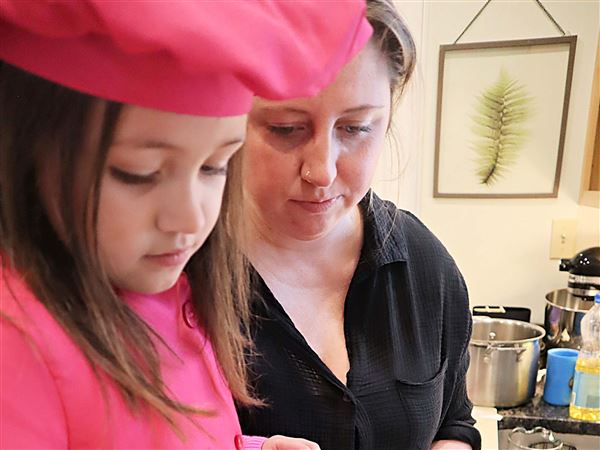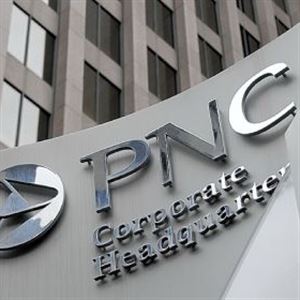When Eva Gillis-Buck got the e-mail that she'd been accepted to Harvard University, her family literally started leaping for joy in her Churchill bedroom.
But it wasn't until the financial aid package arrived days later that they really started to celebrate.
Eva, a senior at The Ellis School, can attend Harvard for about $15,000 per year -- a steep discount from school's $47,215 cost for tuition, room and board. If she chooses to go to Princeton, where she's also been accepted, her annual cost will only be about $6,000.
"It's just a dream come true," said Eva's mother, Bonnie Gillis, a nutritionist at UPMC. "It's impossible to describe how happy I am about it."
Eva is a beneficiary of one of this year's most-talked-about changes in higher education -- the decision by Harvard, Princeton and other elite schools to steeply discount tuition for middle and upper middle class families making up to $200,000 per year.
For students with a family income below $60,000, Harvard is free. Families with incomes between $60,000 and $120,000 will use a sliding scale to pay a percentage of their income between 0 and 10 percent, and those between $120,000 and $180,000 will pay about 10 percent of their income.
In Pennsylvania, Haverford, Lafayette, Lehigh and the University of Pennsylvania have recently pledged to eliminate or limit loans.
The trend of schools increasing financial aid for low-income students actually began in 2001, when Princeton announced that it was replacing student loans with grants. But Harvard's announcement in December drew much more attention, in part because its package reached so far into the upper middle class.
When Eva heard about Harvard's announcement in December, she knew that her family would likely be eligible, but tried not to envision the reduced price actually applying to her.
"I didn't want to let myself think I'd get in," said Eva, a bubbly redhead who plans to major in molecular and cellular biology. "I'm still in shock."
The proportion of wealthy students has been a growing concern among top colleges in recent years.
At the most selective 146 colleges in the country, 74 percent of students came from the top socioeconomic quartile, while 3 percent came from the bottom quartile and 10 percent came from the bottom half, according to the 2004 book, "America's Untapped Resource: Low-Income Students in Higher Education."
The tax-free status of college endowments also has come under increased scrutiny from the U.S. Senate, particularly in relation to rising tuition prices.
After Harvard announced its new funding policies, dozens of other schools followed suit with changes to their financial aid packages. Most of those schools, however, are also highly selective, with endowments of more than $1 billion.
"Most students don't go to Harvard, Yale and Princeton so it doesn't do anything for the 99 percent of students at the other colleges," said Robert Shireman, executive director of the Project on Student Debt. "I don't think we'll see a lot more schools dramatically increasing the amount of aid they're providing to middle income families."
In that vein, he said, many colleges will remain unaffordable even to the upper middle class. While $180,000 sounds like a lot of money, he said, college costs near $50,000 can wipe out almost a third of the family's annual income.
Families with too much money to qualify for substantial financial aid but too little money to easily afford college tuition is a familiar problem at Ellis, said Joanna Schultz, director of college counseling. More than a fifth of Ellis students receive financial aid, as Eva did for part of her time there.
"We have a lot of families who are caught in the middle," said Ms. Schultz. "I don't think [the middle class tuition discounts] will change much the colleges kids go to. It will change what happens after, the burdens on the families."
For Eva's Ellis classmate Zoe Li, whose father is an engineer and whose mother stays home with her two younger siblings, the new funding policies "make you feel that if you do get in, there's a great chance that you can go there. There won't be any other barrier holding you back."
Zoe -- an accomplished violinist and artist who plans to major in chemical engineering -- will go to Princeton next year for about $15,000. Princeton was her first choice and Zoe thinks that she would have gone there even without the tuition discount, but this way "I'll go there with less of a burden, knowing that I won't graduate with [thousands] in loans."
Without the Harvard middle class tuition reduction, Eva thinks that she might have taken the full scholarship she was offered at Washington University in St. Louis.
But after seeing Eva score over 2300 out of 2400 on the SAT, set records as captain of the crew team, win first place in a regional science fair and gain accolades for her paintings, her mother wanted to be able to send her to the school of her choice.
Ms. Gillis took more than a decade to put herself through college, taking time off at various points to work full time. Eva's stepdad's parents took out a second mortgage on their house to finance his college and graduate school.
"I said, 'I will do anything to allow you to go to the school that you really want to go to,'" said Ms. Gillis. "I felt that I would get an extra job or I would go into debt or get a second mortgage or help her pay back loans over time. Now, we will not have to do any of that."
First Published: April 12, 2008, 8:00 a.m.

















